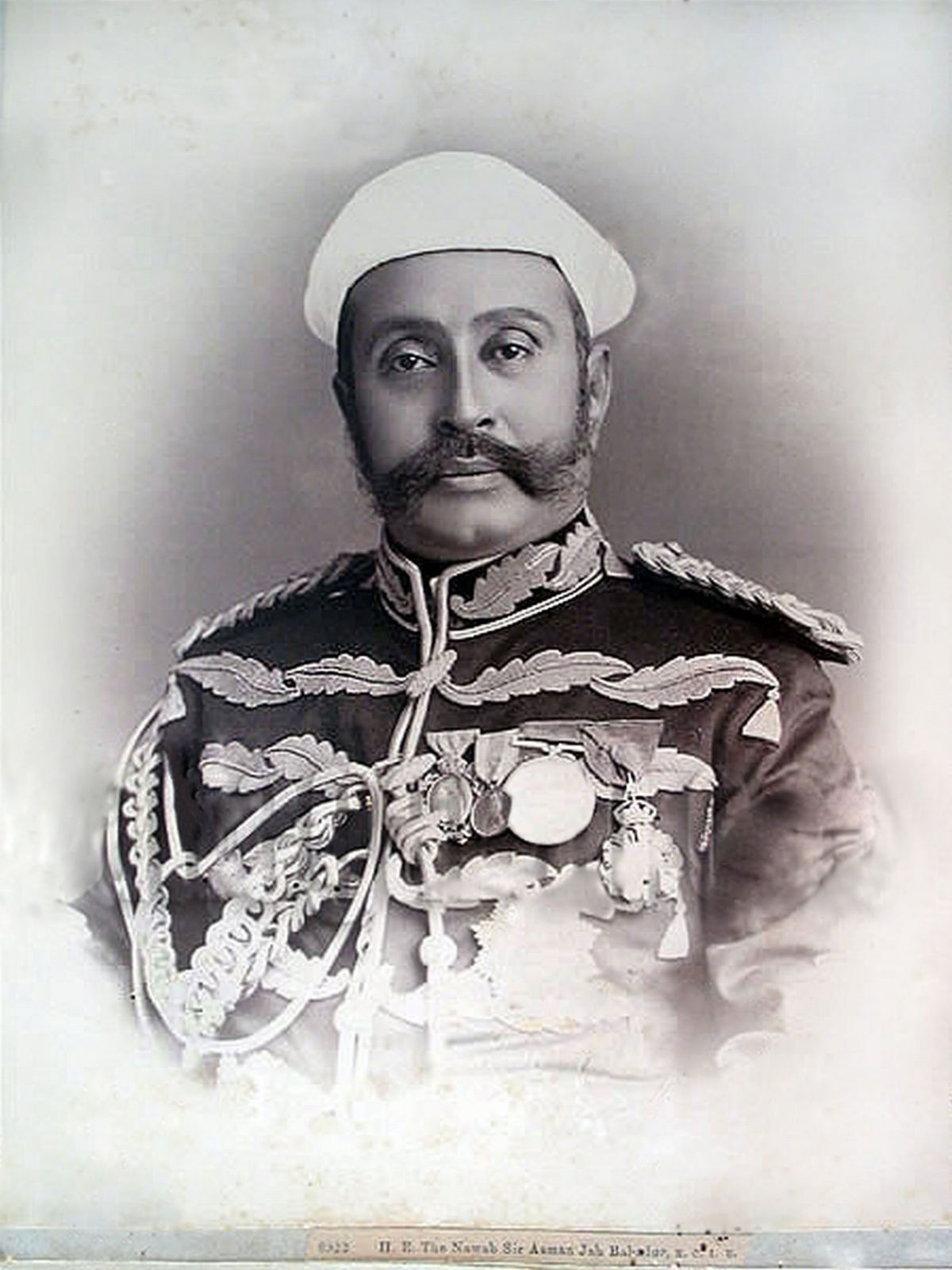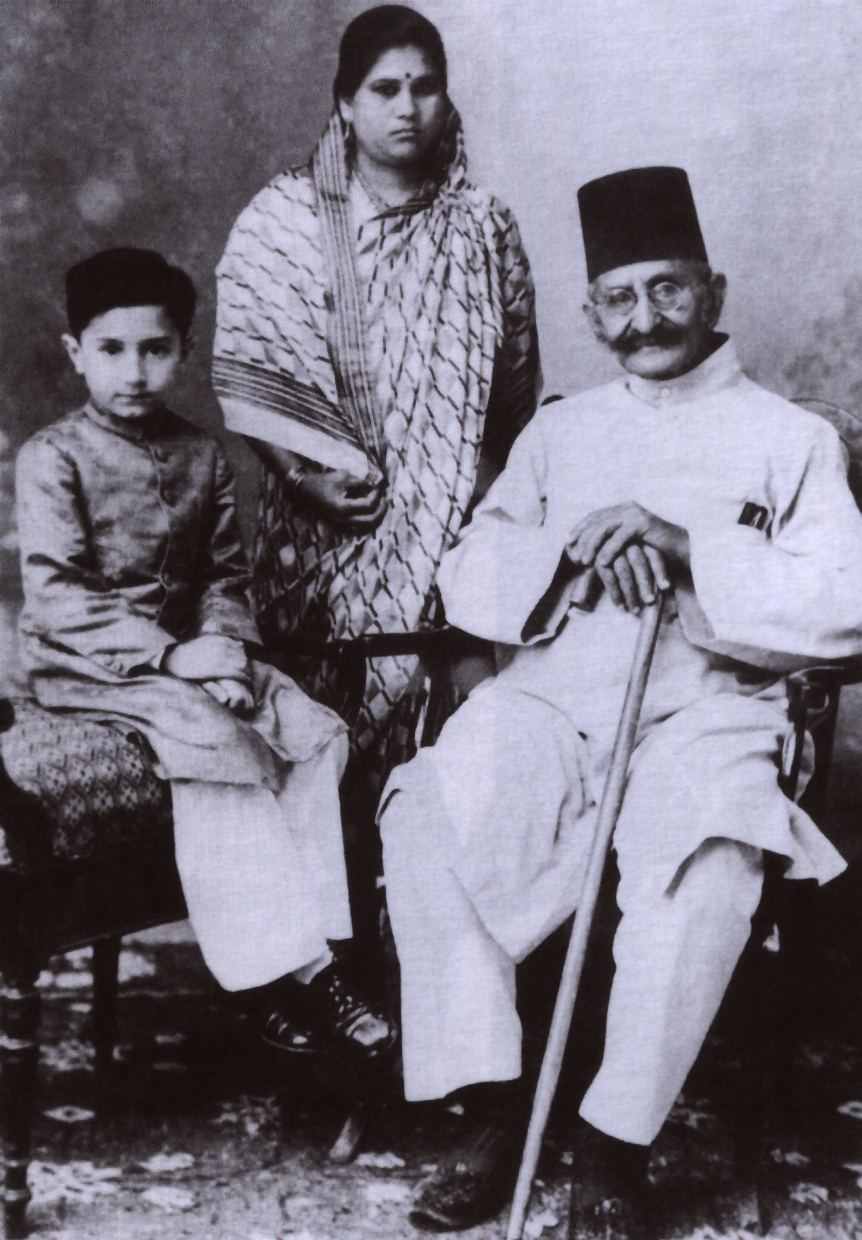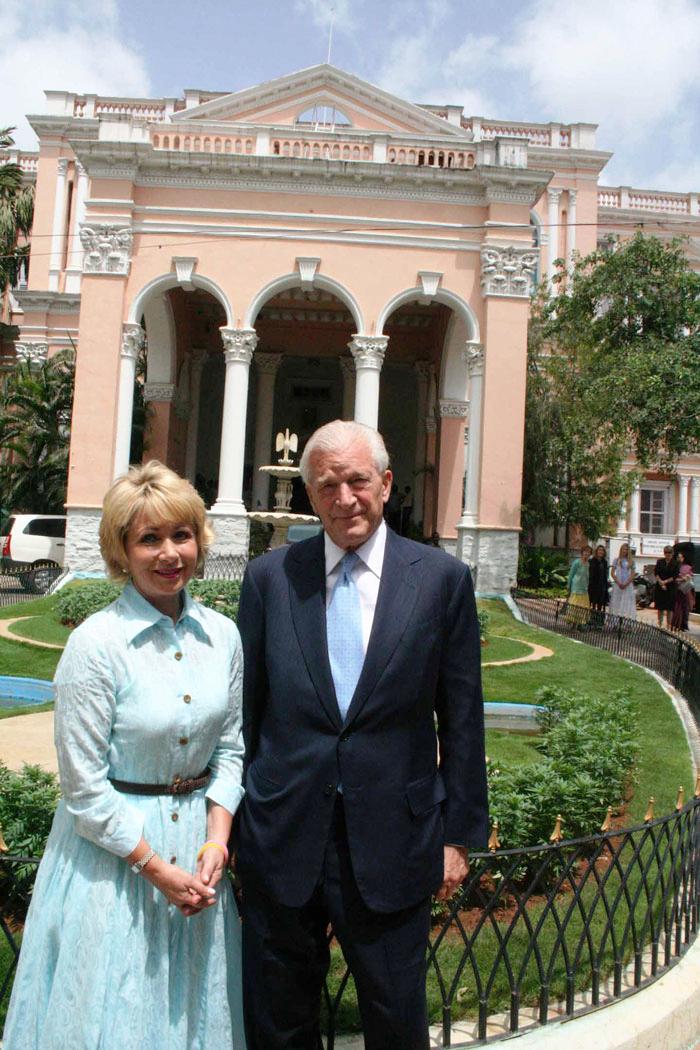|
Viqar-ul-Umra
Sir Viqar ul-Umara, Iqtidar ul-Mulk, Iqbal ud-Dowla, Secundar Jung, Nawab Muhammad Fazl-ud-din Khan Bahadur (13 August 1856 – 15 February 1902), was the Prime Minister of Hyderabad from 1893 to 1901, and also served as the Amir e Paigah from 1881 to 1902. The town of Vikarabad and Village is named after him. Early life and ancestry Viqar-ul-Umra was born as Muhammad Fazluddin Khan on 13 August 1856 to Rashiduddin Khan and Hashmatunnisa Begum. Viqar-ul-Umra's maternal grandmother was Bashirunnisa Begum, a daughter of Nizam Ali Khan Nizam of Hyderabad and Berar. Viqar-ul-Umra was a member of the Paigah family. The family was hierarchically second to the Nizam of Hyderabad. The family members were staunch loyalists of the Nizam. The family descends from the Rashidun caliph Umar. One of the family's ancestor is the Sufi saint Fariduddin Ganjshakar. Another ancestor Muhammad Abu’l Khair Khan was a ''mansabdar'' during Mughal emperor Aurangzeb's reign. Tenure as prime minister ... [...More Info...] [...Related Items...] OR: [Wikipedia] [Google] [Baidu] |
Paigah Family
Paigah is a noble family in the senior aristocracy of Hyderabad State, who were associated with the ruling Nizam since its inception and each maintained his own court, individual palaces, and a standing army of about fourteen thousand troops, both infantry and cavalry. History The word ''Paigah'', which means pomp and rank in Persian, was a title given by the second Nizam of Hyderabad to Nawab Abul Fateh Taig Jung Bahadur in appreciation of the royal services rendered by him. The Nawab was also conferred with the title of ''Shams-ul-Umra'', ''Shams-ul-Mulk'' ''Shams-ud-Daula'' Shams-ul-Umra which Means "The Sun among Nobles" and he became the founder of the Paigah family. Shaikh Muhammad Bahauddin who was Governor of Shikohabad under Mughal Emperor Aurangzeb was the twelfth direct descendant of Shaikh Fariduddin Ganjshakar a saint of Indian subcontinent-(now Punjab, Pakistan), whose linage is traced up to Omar bin Al-Khattab-the second Caliph of Islam. Abul Khair Khan son of ... [...More Info...] [...Related Items...] OR: [Wikipedia] [Google] [Baidu] |
Sir Asman Jah
Nawab Sir Muhammad Mazharuddin Khan Bahadur (1839 – 18 July 1898), commonly known as Sir Asman Jah or Nawab Sir Asman Jah Bahadur, was an Indian noble who served as Prime Minister of Hyderabad from 1887 to 1894. A member of the powerful Paigah family, He Was a grandson of His Highness the Nizam Nawab Sikander Jah, Asaf Jah III And he was married to parwarish unisa begum daughter of Afzal-ud-Daulah 5th nizam of Hyderabad State, Asman Jah built the Asman Garh Palace, Basheer Bagh Palace, saroonagar palace and Mahboob Chowk Clock Tower. He also represented Nizam Mahbub Ali Khan at the Golden Jubilee of Queen Victoria and played as regent to Mahboob Ali Khan. Early life and ancestry Asman Jah was born as Mazharuddin Khan in 1839, although his exact date of birth is not recorded. His biological father Sultanuddin Khan was the third son of Fakhruddin Khan. After Sultanuddin's death, Asman Jah was adopted by his uncle Rafiuddin Khan Shams-ul-Umra III. Jah's maternal grandmoth ... [...More Info...] [...Related Items...] OR: [Wikipedia] [Google] [Baidu] |
Nawab Asman Jah Bahadur
Nawab Sir Muhammad Mazharuddin Khan Bahadur (1839 – 18 July 1898), commonly known as Sir Asman Jah or Nawab Sir Asman Jah Bahadur, was an Indian noble who served as Prime Minister of Hyderabad from 1887 to 1894. A member of the powerful Paigah family, He Was a grandson of His Highness the Nizam Nawab Sikander Jah, Asaf Jah III And he was married to parwarish unisa begum daughter of Afzal-ud-Daulah 5th nizam of Hyderabad State, Asman Jah built the Asman Garh Palace, Basheer Bagh Palace, saroonagar palace and Mahboob Chowk Clock Tower. He also represented Nizam Mahbub Ali Khan at the Golden Jubilee of Queen Victoria and played as regent to Mahboob Ali Khan. Early life and ancestry Asman Jah was born as Mazharuddin Khan in 1839, although his exact date of birth is not recorded. His biological father Sultanuddin Khan was the third son of Fakhruddin Khan. After Sultanuddin's death, Asman Jah was adopted by his uncle Rafiuddin Khan Shams-ul-Umra III. Jah's maternal grandmothe ... [...More Info...] [...Related Items...] OR: [Wikipedia] [Google] [Baidu] |
Falaknuma Palace
Falaknuma is a palace in Hyderabad, Telangana, India. It originally belonged to the Paigah family, and was later owned by the Nizam of Hyderabad. It is on a hillock and covers a area in Falaknuma, from Charminar. It was built by Nawab Sir Viqar-ul-Umra, Prime Minister of Hyderabad and the uncle & brother-in-law of the sixth Nizam. ''Falak-numa'' means "Like the Sky" or "Mirror of Sky" in Urdu. Design An English architect William Ward Marret designed the palace. Sir Vicar's monogram "VO" is on the furniture, walls and ceiling of the palace. It is made completely with Italian marble with stained-glass windows and covers an area of . The palace was built in the shape of a scorpion with two stings spread out as wings in the north. The middle part is occupied by the main building and the kitchen, ''Gol Bangla'', ''Zenana Mehal'', and harem quarters stretch to the south. The Nawab was an avid traveller, and his influences show in the architecture, which combines Italian and Tudo ... [...More Info...] [...Related Items...] OR: [Wikipedia] [Google] [Baidu] |
Maharaja Sir Kishen Pershad
Maharaja Sir Kishen Pershad Bahadur Yamin us-Sultanat (1864 – 13 May 1940) was an Indian noble who served as Prime Minister of Hyderabad twice. He was a childhood friend of the Nizam and was a staunch Nizam loyalist throughout his life. In 1892, Pershad became the '' peshkar'' (deputy minister) of the state. Nine years later, Nizam Mahbub Ali Khan appointed him ''dewan'' (prime minister) of the state. During his first tenure as ''dewan'', he was credited with increasing the state's revenue and helping victims of the Great Musi Flood of 1908. In 1926, he was reappointed as ''dewan''. During this period, he passed the Mulki regulations, which favoured local citizens over British for administrative positions. A proponent of the ''Ganga-Jamuni tehzeeb'' (culture of the central plains of Northern India), Pershad also wrote Urdu and Persian poems which were influenced by Sufism. He was a patron of poetry, paintings and music. He had seven wives including both Hindus and Muslims. ... [...More Info...] [...Related Items...] OR: [Wikipedia] [Google] [Baidu] |
Paigah Palace
Paigah Palace is a palace in Hyderabad, India. It was built by Sir Vicar-ul-Umra, a Paigah nobleman. This was built after he gave the famous Falaknuma Palace to the sixth Nizam of Hyderabad state, Mahbub Ali Khan, Asaf Jah VI. The Palace houses the Consulate General of the US in Hyderabad. History Between 1975 and 2008, the palace housed the office of the Hyderabad Urban Development Authority. In 1999, a four-storeyed annexe was added towards the rear side of the palace. Paigah Family In the hierarchy of nobles of Hyderabad, the Paigah family ranked immediately next to the ruling family of Nizams. The Paigahs were also the foremost palace builders of Hyderabad. As described earlier, the Falaknuma Palace was built by Nawab Viqar ul-Umra This was later acquired by the Nizam VI. Vikarul Umra also built the Paigah Palace in Begumpet, presently the office of USA Consulate and having previously hosted the office of Hyderabad Urban Development Authority. It dates back to ... [...More Info...] [...Related Items...] OR: [Wikipedia] [Google] [Baidu] |
Prime Minister Of Hyderabad
__NOTOC__ This article lists the prime ministers of the Hyderabad State. In 1919, Asaf Jah VII ordered the formation of the Executive Council of Hyderabad, presided by Sir Sayyid Ali Imam, and with eight other members, each in charge of one or more departments. The President of the Executive Council would also be the Prime Minister of Hyderabad. The position was abolished in 1948 when Indian Army invaded the Hyderabad State and merged it with the Union of India. List of officeholders See also * List of Diwans of Mysore * List of Diwans of Travancore References Hyderabad, Princely States of India WorldStatesmen.org {{DEFAULTSORT:Prime Ministers of Hyderabad State * Hyderabad State Hyderabad State () was a princely state located in the south-central Deccan region of India with its capital at the city of Hyderabad. It is now divided into the present-day state of Telangana, the Kalyana-Karnataka region of Karnataka, and t ... India history-related lists 1724 es ... [...More Info...] [...Related Items...] OR: [Wikipedia] [Google] [Baidu] |
Asafia State Library
The State Central Library Hyderabad, ( te, స్టేట్ సెంట్రల్ లైబ్రరీ) ( ur, مكتبہ آصفیہ) known as the State Central Library (SCL) earlier known as Asafia Library, is a public library in Hyderabad, Telangana. The building was constructed in 1891. It is one of the most imposing structures in the city and was granted heritage status in 1998 by INTACH, Hyderabad. The library is located at Afzal Gunj on the bank of the River Musi. It houses 500,000 books and magazines including some rare Palm-leaf manuscripts. This library is the apex of the state's library system. History The State Central Library began in 1891 due to the efforts of Syed Hussain Bilgrami, whose personal library formed the institution's initial core. The library building has an area of 72,247 square yards and was built under the supervision of the architect, Aziz Ali. The foundation was laid in January 1932 by Prince Mir Osman Ali Khan. At the construction's comple ... [...More Info...] [...Related Items...] OR: [Wikipedia] [Google] [Baidu] |
Andhra Pradesh State Assembly
The Andhra Pradesh Legislative Assembly or Andhra Pradesh Śāsana Sabha is the lower house of the Andhra Pradesh Legislature. The Legislative Assembly consists of 175 members which are elected by adult universal suffrage under the first-past-the-post system. The duration of the Assembly is five years from the date appointed for its first meeting, unless it is decided to dissolve the Assembly sooner. The Legislative Assembly's main functions include legislation, overseeing of administration, passing the budget, and airing public grievances. The assembly is Bicameral and holds three sessions annually: one for Budget, Monsoon and Winter. The Legislative Assembly took up residence in the interim Legislative Assembly Building in Amaravati beginning in the 2016 Budget session. The new building has systems for automatic speech translation and automatic vote recording. History The Andhra Legislative Assembly was constituted after the formation of Andhra State on 1 October 195 ... [...More Info...] [...Related Items...] OR: [Wikipedia] [Google] [Baidu] |
Rashidun Caliphate
The Rashidun Caliphate ( ar, اَلْخِلَافَةُ ٱلرَّاشِدَةُ, al-Khilāfah ar-Rāšidah) was the first caliphate to succeed the Islamic prophet Muhammad. It was ruled by the first four successive caliphs of Muhammad after his death in 632 CE (11 Hijri year, AH). During its existence, the empire was the most powerful economic, cultural, and military force in Western Asia, West Asia. The caliphate arose following Muhammad’s passing in June 632 and the subsequent debate over the Succession to Muhammad, succession to his leadership. Muhammad's childhood friend and close companion Abu Bakr (), of the Banu Taym clan, was elected the first caliph in Medina and he began the Early Muslim conquests, conquest of the Arabian Peninsula. His brief reign ended in August 634 when he died and was succeeded by Umar (), his appointed successor from the Banu Adi clan. Under Umar, the caliphate expanded at an unprecedented rate, ruling more than two-thirds of the Byzantine Empir ... [...More Info...] [...Related Items...] OR: [Wikipedia] [Google] [Baidu] |
Amir
Emir (; ar, أمير ' ), sometimes transliterated amir, amier, or ameer, is a word of Arabic origin that can refer to a male monarch, aristocrat, holder of high-ranking military or political office, or other person possessing actual or ceremonial authority. The title has a long history of use in the Arab World, East Africa, West Africa, Central Asia, and the Indian subcontinent. In the modern era, when used as a formal monarchical title, it is roughly synonymous with "prince", applicable both to a son of a hereditary monarch, and to a reigning monarch of a sovereign principality, namely an emirate. The feminine form is emira ( '), a cognate for "princess". Prior to its use as a monarchical title, the term "emir" was historically used to denote a "commander", "general", or "leader" (for example, Amir al-Mu'min). In contemporary usage, "emir" is also sometimes used as either an honorary or formal title for the head of an Islamic, or Arab (regardless of religion) organisatio ... [...More Info...] [...Related Items...] OR: [Wikipedia] [Google] [Baidu] |
Asaf Jah III
Nawab Mir Akbar Ali Khan Siddiqi Bahadur, Sikander Jah, Asaf Jah III (11 November 1768 – 21 May 1829), was the 3rd Nizam/Ruler of Hyderabad, India from 1803 to 1829. He was born in Chowmahalla Palace in the Khilwath, the second son of Asaf Jah II and Tahniat un-nisa Begum. Marriage He was married (first) with Jahan Parwar Begum Sahiba (Haji Begum) daughter of Nawab Saif Ul Mulk (Maali Mian) son of Moin un Daula Nawab Gulam Said Khan Bahadir Surab Jang in May 1800. Second with Fazilath Unisa Begum (Chandni Begum). Official name His original names were Sikandar Jah, Asaf ul-Mulk, Asad ud-Daula, Walashan Nawab Mir Akbar 'Ali Khan Siddiqi Bahadur, Asad Jang. He was officially known as ''Asaf Jah III, Nizam ul-Mulk, Nizam ud-Daula, Mir Akbar 'Ali Khan Siddiqi Bahadur, Faulad Jang, Nizam of Hyderabad''. Military expansion During his reign, a British cantonment was established near Hyderabad and the area was christened after him as Secunderabad. His son Samsamadaula (Mir Basheerudd ... [...More Info...] [...Related Items...] OR: [Wikipedia] [Google] [Baidu] |





.jpg)

.jpg)
